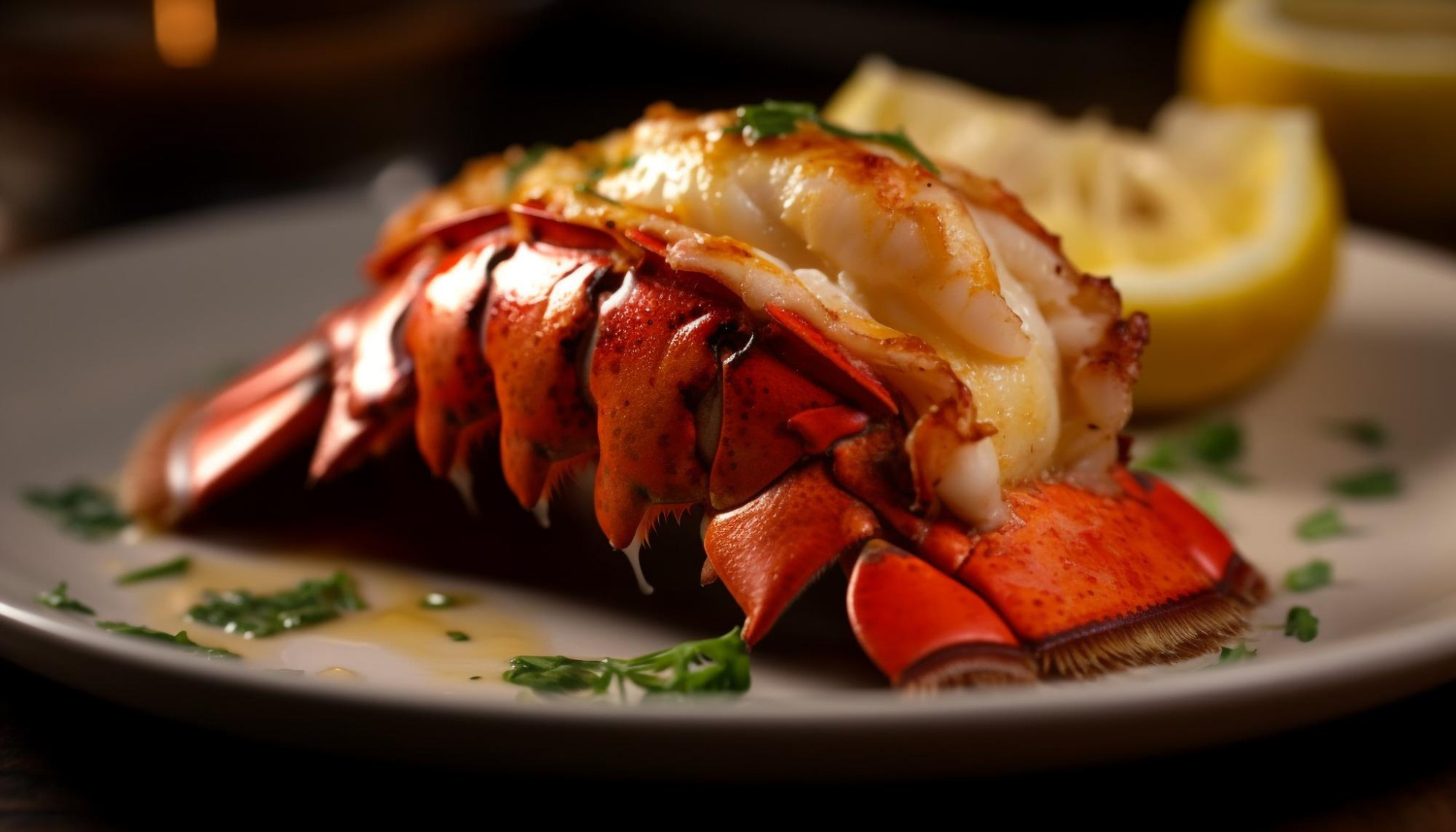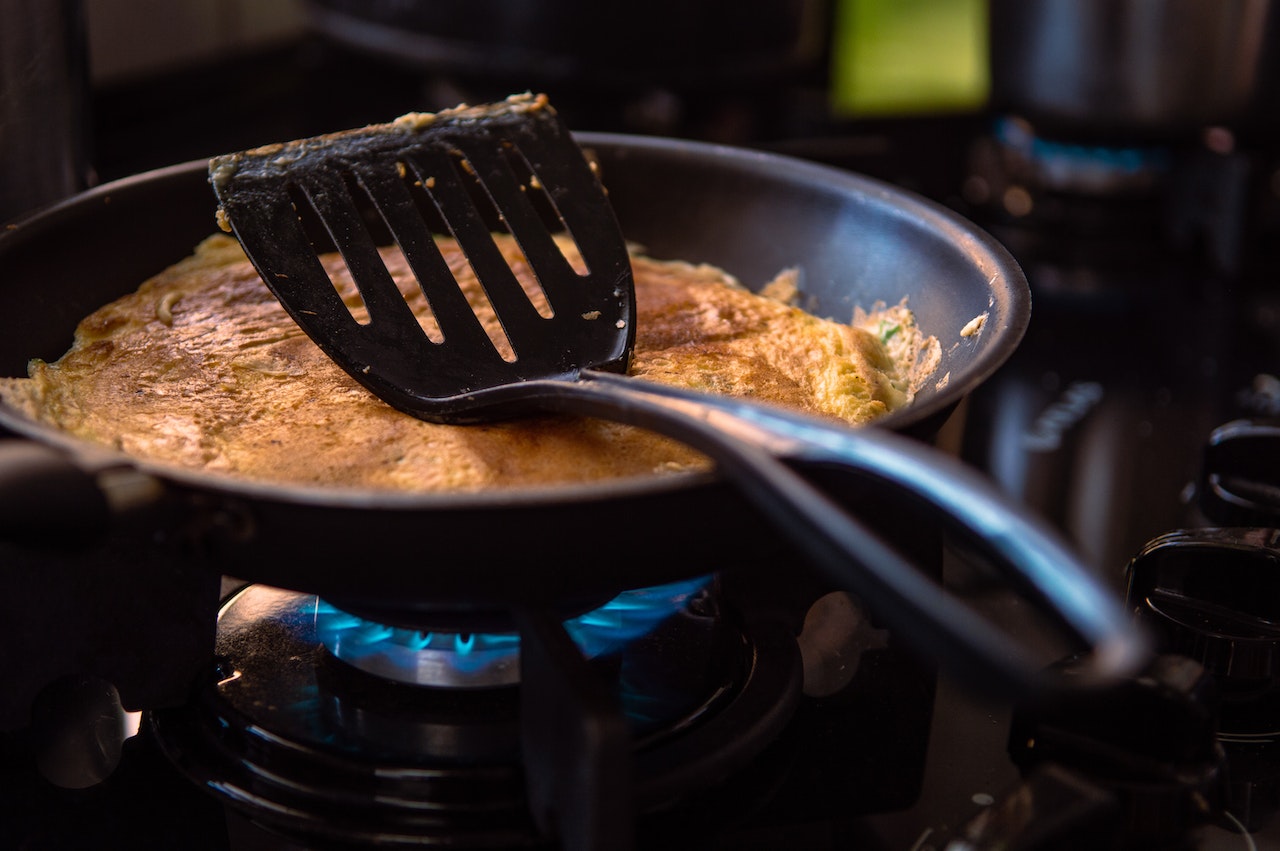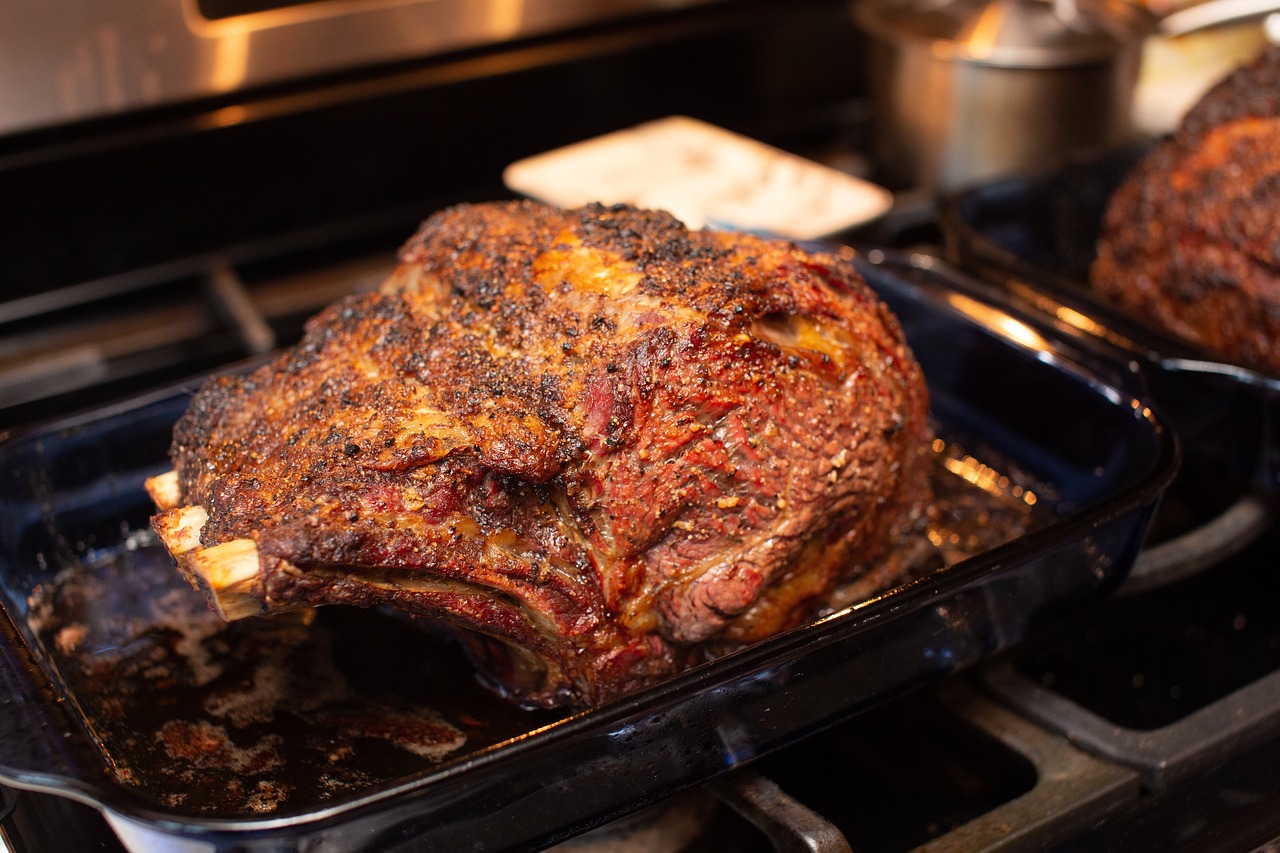Image by vecstock on Freepik
Ah, lobster tail, the seafood delicacy that, when cooked correctly, can transform a regular dinner into something fit for royalty. Or, if done wrong, can turn into a chewy mess that makes you wonder if your taste buds ever truly loved you. But don’t fret! This guide will definitely not lead you astray. In fact, by the end, you’ll probably, maybe, sort of be a lobster tail expert. Or not. Let’s dive into the deep sea of humor and culinary genius, shall we?
Ingredients:
- Lobster Tails: Obviously. It’s in the title. If you’re feeling extra fancy, go for the fresh ones, but frozen can also do if you don’t mind the cold shoulder from your food. (For our purposes, let’s say 4 medium-sized tails)
- Water: You know, that clear stuff? About 6-8 cups, but honestly, if you overdo it, I promise the water won’t get offended.
- Salt: Around 1 tablespoon. It’s like the confetti of the culinary world — sprinkle liberally.
- Butter: ½ cup, melted. Because butter makes everything better. Yes, even that bad day you had last Tuesday.
- Lemon: 1 lemon, zested and juiced. Perfect for that zesty personality you’ve got going.
- Garlic: 2 cloves, minced. To keep those pesky vampires away.
- Paprika: Just a pinch. To add a touch of color and ensure your lobster doesn’t look like it’s seen a ghost.
- Chopped parsley: For garnish. But if you forget it, just tell your guests it’s an “understated” presentation.
“Simple” Instructions:
1. Preparing Your Lobster Victim – I Mean, Tail:
So, you’ve procured a lobster tail. Great start! If they’re frozen, remember to thaw them first because frozen lobster isn’t the goal here. Lay the tail on its back (shell side up), and using your sharpest kitchen scissors, cut a slit down the center of the hard shell, starting from the open end and stopping just before you reach the fin at the opposite end. Try not to cut too deeply into the meat beneath the shell. The goal is to create an opening in the shell so that you can get to the meat and give it the “butterfly” appearance. It’s not about injuring the lobster; it’s just a fancy culinary maneuver.
2. Show the Lobster Who’s Boss:
Now, you’ve got to butterfly it. Hold the lobster tail in one hand and, using your fingers, gently pry the meat away from the shell. This sounds complex, but it’s not rocket science. It’s just lobster science. Once you’ve made a gap, press the shell together, which will make the meat sit up and out like it’s on a little lobster lounge chair.
3. The Jacuzzi Treatment:
Take your water (remember that clear stuff?) and pour it into a big pot. Add that tablespoon of salt — it’s like a spa treatment for your lobster tail. Once the water’s boiling like it’s mad at you, gently place your lobster tails into the pot. Let them boil for about 3-5 minutes until they’re a beautiful shade of red. This means they’re cooked, not embarrassed.
4. Butter it Up, Baby:
In a pan, melt that half cup of butter. This is your lobster’s final bath before the grand presentation. Toss in the minced garlic, because, hey, who doesn’t love a garlic-infused bath? Once everything’s simmering like your anticipation, remove it from the heat and squeeze in that zesty lemon juice.
5. Time to Paint:
Using a pastry brush (or your fingers if you’re feeling particularly adventurous today), paint your boiled lobster tails with the garlic-lemon-butter concoction. Make sure you get it into all those nooks and crannies. We don’t want any lobster part feeling left out.
6. Spice Up Your Life:
Remember that paprika you got? It wasn’t just for funsies. Sprinkle it over the tails. It’ll give them a fancy tan and will make you look like a seasoned chef, even if the last thing you cooked was instant noodles.
7. Grill ‘Em Up:
Heat up your grill (or oven broiler, for those who think grilling is only for summer). Place those shiny, buttery tails on there for about 2-3 minutes. You want them to get a nice golden hue, not a burn reminiscent of a bad beach day.
8. Final Flourish:
Once they’re looking like they belong on the cover of “Lobster Monthly”, take them off the grill. Drizzle any leftover butter concoction over them. And, for that Instagram-worthy touch, sprinkle your chopped parsley. If you’ve forgotten the parsley, just caption your photo, “minimalist gourmet”.
9. Feast!:
There you have it! Lobster tails that are sure to impress, even if the only one you’re impressing is yourself. Serve with a side of your favorite wine, or, you know, grape juice if that’s your style. After all, we’re all about sophistication here.
10. Cleanup:
This step is super easy. Call into the room, “Who wants dessert?” and while everyone’s distracted, subtly hint that washing up might speed up the dessert process. If that doesn’t work, well, there’s always paper plates for next time.
In conclusion, mastering the art of lobster tail cooking isn’t as scary as it sounds. And with this 100% serious, not-at-all-sarcastic guide, you’re well on your way to becoming the talk of the town, or at least the talk of your kitchen. Happy cooking, lobster lovers!
Pro Tips for Perfect Lobster Tail
Lobster tail is such a delicacy, and there’s always room for a few more (possibly even slightly less sarcastic) tips to ensure your success:
- Freshness Matters: Whenever possible, choose fresh lobster tails from a reputable source. The taste and texture difference between fresh and frozen can be significant. If you must go with frozen, ensure it’s thawed properly — overnight in the fridge is ideal.
- Avoid Overcooking: Lobster meat can become tough and rubbery if overcooked. It’s one of the tragedies of seafood. Always keep an eye on your tails and use the recommended cooking times as guidelines, adjusting based on size and thickness.
- Tail Size: Different sized lobster tails require different cooking times. It’s not just a “one-size-fits-all” deal. So, adjust accordingly. A 3-ounce tail might need only 3 minutes of boiling, while a 6-ounce tail could require 6 minutes.
- Clarified Butter: While melted butter is great, using clarified butter can elevate your lobster tail game. Clarified butter is butter without the milk solids, making it pure butterfat. This can provide a richer, more intense flavor without the risk of burning the milk solids.
- Cooking Alternatives: Boiling isn’t the only method. Broiling, grilling, and steaming are all fantastic ways to prepare lobster tail. Each method brings its own unique flavor and texture to the table.
- Wine Pairing: Elevate your lobster experience with a good wine pairing. A crisp, chilled Chardonnay or Sauvignon Blanc can complement the sweet richness of lobster magnificently.
- Dipping Sauces: While butter is the classic choice, don’t be afraid to get creative! Consider offering a garlic aioli, a tangy citrus sauce, or even a spicy sriracha mayo for those who like a little kick.
- Presentation: The look is almost as important as the taste. Consider using fresh herbs, edible flowers, or even caviar as garnish to give it that gourmet touch.
Remember, the key to a great lobster tail is a combination of quality ingredients, precise cooking, and a dash of love (or humor, whichever you prefer). Enjoy!
FAQs: The Lobster Tail Tell-All
If your lobster meat is more reminiscent of a gym shoe than a succulent seafood delight, you’ve likely overcooked it. Remember, lobster can be quite sensitive, like your favorite rom-com protagonist. Too much heat for too long and things go awry!
This guide is tailored for the tails, but whole lobsters would appreciate the love too. However, whole lobsters require different cooking times and preparation methods. So, while some steps may apply, always ensure you’re using appropriate guidelines for the dish you’re preparing.
While fresh is often favored for its superior taste and texture, frozen is more accessible and can still be quite delicious when prepared properly. Thaw correctly and give that frozen tail some extra love.
Undercooked lobster meat will have a translucent appearance rather than the opaque, creamy white of cooked lobster. If in doubt, cook it a little longer!
Lobster tails have a natural tendency to curl when cooked. To prevent this, you can insert a skewer or small knife through the tail before boiling to keep it straight. Or embrace the curl — it adds character!
If you’ve somehow managed to resist devouring every morsel, first, congratulations! Second, place leftovers in an airtight container and refrigerate. Consume within 2 days for best taste and safety.
Lobster is like a blank canvas, and while our recipe provides one artsy approach, feel free to get creative. Some folks love tarragon, others might prefer a bit of heat with cayenne. Explore and let your taste buds be the guide.
While the lobster won’t hold a grudge if you don’t, adding salt helps season the meat while boiling, enhancing its natural flavors. Plus, it gives that “ocean simmer” vibe, which is always a good thing.
Butter complements the rich sweetness of lobster beautifully. It’s like pairing a great song with a fantastic dance. But if butter’s not your jam, feel free to explore other dipping delights.



